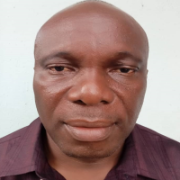
Clement Ogbonda
Work place: Department of Physics, Ignatius Ajuru University of Education, Port Harcourt, Nigeria
E-mail: clement.ogbonda@iaue.edu.ng
Website:
Research Interests: Chemistry & Materials Science, Materials Science
Biography
Clement Ogbonda is a Solid State Physicist, he got his M.Sc and Ph.D with Rivers State University in 2007 and 2015 respectively. In 2000, he had his B.Sc Physics/Material Science at the University of Port Harcourt, Rivers State. He is in the Department of Physics, Ignatius Ajuru University of Education, Port-Harcourt. His research areas and focus is on Semiconductor, Dielectric Materials, Electronics Nano Particles. His email address is clement.ogbonda@iaue.edu.ng
Author Articles
An Adaptive Hybrid Outdoor Propagation Loss Prediction Modelling for Effective Cellular Systems Network Planning and Optimization
By Ikechi Risi Clement Ogbonda Friday Barikpe Sigalo Isabona Joseph
DOI: https://doi.org/10.5815/ijisa.2023.04.02, Pub. Date: 8 Aug. 2023
The frequent poor service network experienced by some mobile phone users within some deadlock areas in Nigeria is an issue which has been identified by different researchers due to wrong positioning and planning of the evolved NodeB (eNodeB) transmitter using existing propagation loss models. To effectively contribute towards this potential issue constantly experienced in some part of Nigeria, an adaptive hybrid propagation loss model that is based on wavelet transform and genetic algorithm methods has been developed for cellular network planning and optimization, with the capacity to resolve the problems absolutely. First, the signal strengths were measured within four selected eNodeB cell sites in long term evolution (LTE) at 2600MHz using drive-test method. Secondly, the measured data were denoised through wavelet tools. Thirdly, COST231 model was optimize and deduced to generic model with parameters. Fourthly, genetic optimization algorithm automatically developed the propagation loss models for denoised signal data (designated as wavelet-GA model) and unprocessed signal data (designated as GA model). The hybrid wavelet-GA propagation loss model, GA propagation loss model, and COST231 propagation loss model were compared based on three error metrics such as root mean square error (RMSE), mean absolute error (MAE) and correlation coefficient (R). The developed hybrid wavelet-GA model estimated the lowest RMSEs of 2.8813 dB, 3.9381 dB, 4.7643 dB, 6.9366 dB, whereas, COST231 model gave highest value of RMSE. The developed hybrid wavelet-GA model also derived the least value of MAE as compared with COST231 and the GA models, such as, 2.2016 dB, 2.8672 dB, 3.4766 dB, 5.8235 dB. The correlation coefficients were also compared, and it showed that the developed hybrid wavelet-GA model were 90.04%, 78.61%, 92.21% and 91.23% for the four cell sites. The developed hybrid wavelet-GA model was also validated to account for the performance level by checking for the correlation coefficient using another measured signal data from different eNodeB cell sites other than the once used for the developed of the hybrid wavelet-GA model. It was noticed that the developed hybrid wavelet-GA propagation loss model is 97.41% valid. Existing standard COST231 model are not able to predict propagation loss with high level of accuracy, as such not efficient to be applied within part of Port Harcourt, Nigeria. The proposed hybrid wavelet-GA model has proven to achieve high performance level and it is relevant to be utilized for cellular network planning and optimization. In future purposes, more regions and locations should be considered to form a broader view in the development of more robust propagation loss models.
[...] Read more.Other Articles
Subscribe to receive issue release notifications and newsletters from MECS Press journals